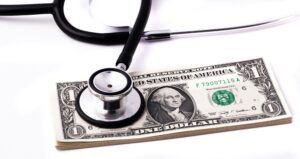
When I bought identified with Stage 3b Hodgkin Lymphoma at age 32, it was virtually not possible to course of. With no household historical past or life-style threat components that put most cancers on my radar, I stared on the emergency room physician in utter disbelief when he stated the CT scan of my swollen lymph node confirmed what gave the impression to be most cancers—and many it. A number of days away from a bucket record journey to Japan, I’d solely gone to the emergency room as a result of the antibiotics CityMD prescribed to me after I was sick weren’t working.I didn’t need to be sick abroad. So when the physician advised me of my analysis, the solely query I might conjure was: “So Tokyo is a no-go?”
World wide, most cancers charges in individuals underneath 50 are surging, with a current examine in BMJ Oncology displaying that new circumstances for younger adults have risen 79% total over the previous three a long time. Within the U.S. alone, new most cancers diagnoses in individuals underneath 50 hit 3.26 million, which is a 79% rise since 1990, with the most typical sorts being breast, windpipe, lung, bowel, and abdomen. A brand new characteristic within the Wall Road Journal highlights the mad sprint amongst docs and researchers to find out what’s inflicting this troubling rise. Unusually, total most cancers charges within the U.S. have dropped over the previous three a long time, whereas younger individuals—significantly with colorectal cancers—are more and more identified at late phases. “We have to make it simpler for adolescents and younger adults to take part in medical trials to enhance outcomes and examine the components contributing to earlier onset cancers so we are able to develop new cures,” says Julia Glade Bender, MD, co-lead of the Stuart Middle for Adolescent and Younger Grownup (AYA) Cancers at Memorial Sloan Kettering in New York Metropolis (the place I’m at present a affected person.)
Docs suspect that life-style components and environmental parts, from microplastics to ultra-processed meals, may very well be accountable. However many adults of their 20s and 30s, corresponding to myself, have been in any other case wholesome earlier than their diagnoses. It felt like all these years of forcing myself to run, eat high-fiber meals, and choke down kombucha have been for nothing.
Most cancers is hell at any age, however the challenges dealing with younger adults are particularly steep, because the illness disrupts a formative interval for constructing a profession, household, and even wholesome vanity, from physique picture to gender id. It’s vital that our strategy to treating and supporting these sufferers displays the severity of this disruption. In recent times, a rising variety of most cancers hospitals have developed younger adult-specific programming like help teams, info periods on courting and sexual well being, and even cell apps to assist counter social alienation. However there’s nonetheless a protracted technique to go.
Learn extra: Why I Stopped Being A “Good” Most cancers Affected person
Shockingly sufficient, canceling my journey to Japan was the least of my worries. Past the excruciating bodily unintended effects of high-dose chemotherapy and a lot of life-threatening issues, most cancers pulverized my vanity into nothingness, as I watched friends get married and promoted from my mattress. Fortunately, after switching to a brand new hospital, I discovered help teams that linked me with a group of friends who bought it, in addition to social staff who work completely with younger adults and thus acknowledged lots of my greatest challenges, like social isolation, monetary pressure, the courting nightmare, and hating my bald head.
Maybe the largest motive I resented most cancers was for disrupting a milestone I’d labored for my entire life: a e book launch. (My analysis got here two months earlier than my first e book was printed.) Younger maturity is supposed to be plagued by these varieties {of professional} and private benchmarks, lots of that are exhausting sufficient to perform with out tumors; courting, as an example, is not possible for me whilst a wholesome particular person. Now I’ve to re-enter the pool older, weaker, and extra traumatized?
“Younger grownup sufferers could also be attempting to say independence from dad and mom, set up a profession or intimate relationship, and even be dad and mom themselves,” says Bender. “Most might be naïve to the medical system or a severe well being situation.” And they also require versatile, inventive clinicians who might help navigate them “to and thru one of the best out there remedy and again to their lives, inevitably ‘modified’ however intact.” Not solely do these sufferers want specialised psychosocial help, however analysis initiatives ought to prioritize creating remedies that decrease long-term toxicities.
On condition that many younger sufferers haven’t but constructed monetary stability and are sometimes in some type of debt, organizations like Younger Adults Survivors United (YASU) have emerged to help younger grownup survivors and sufferers via the monetary overwhelm. Stephanie Samolovitch, MSW and founding father of YASU, says that there’s nonetheless an infinite want for assets supporting younger grownup most cancers sufferers and survivors.
“Most cancers causes a younger grownup to be dependent once more, whether or not it’s transferring again in with dad and mom, getting rides to appointments, or asking for monetary assist,” says Samolovitch, who was identified with leukemia in 2005, two weeks earlier than her 20th birthday. “Younger adults by no means count on to use for Medicaid or Social Safety Incapacity throughout our twenties or thirties, but most cancers would not give us a selection generally. That causes stress, disgrace, despair, and anxiousness when attempting to navigate the healthcare system.”
Learn extra: Create an Motion Plan After a Most cancers Analysis
When Ana Calderone, a 33-year-old journal editor, was identified with stage 2 breast most cancers at 30, probably the most difficult a part of getting identified so younger was “all the pieces.”
“I felt prefer it set my entire life again, which sounds silly as a result of I used to be actually preventing for my life,” she says. “Who cares if I needed to delay my marriage ceremony a 12 months as a result of I used to be nonetheless getting radiation therapy? However it was actually exhausting on the time. Every thing was delayed, and nonetheless is.”
Throughout chemo, Calderone’s docs gave her a shot that she nonetheless receives to try to protect her ovaries, and he or she’s been capable of strive IVF twice. She says she needed to proactively advocate for these issues along with her care workforce. Whereas Calderone is at present most cancers free, she nonetheless should take treatment that has additional delayed her plans to construct a household. “I’m pretty assured I’d have a toddler by now if I didn’t get most cancers. That’s been probably the most devastating half,” she says. “My oncologist would think about letting me get pregnant in two extra years, which might be 4.5 years post-diagnosis, and even that’s nonetheless a threat.”
For 32-year-old Megan Koehler, whose son was one and a half when she was identified with Hodgkin Lymphoma, the toughest half “was understanding the world continued on whereas I spent days in mattress,” she says. “My coworkers nonetheless labored on initiatives I used to be presupposed to be a part of, and the worst was understanding my son was rising up, studying to talk sentences, and simply turning into a toddler with out me – or so it felt that means.”
She remembers crying for many of his second birthday as a result of she was in mattress submit chemo, feeling devastated that she didn’t have the power to spend the day with him. Throughout a 50-plus day hospital keep brought on by an hostile response to a chemotherapy drug, she would Facetime him and cry when he spoke in sentences, as a result of he wasn’t doing that earlier than she was admitted. Whereas she’s grateful for the help she had from her husband and mom, she felt alienated. “I spoke to some individuals my age through social media, however nobody in particular person. My heart largely catered to the older generations, so it was considerably isolating. I did have a terrific relationship with a number of of the infusion nurses who have been round my age.”
Whereas oncologists could also be rightly centered on saving sufferers’ lives, there should be extra consideration for high quality of life throughout and after therapy – each bodily and psychological. “Extra questions have to be requested about their relationships, fertility choices, and any psychological well being considerations or signs,” says Samolovitch. From a analysis perspective, initiatives should broaden to pinpoint not solely the explanation for the rise of most cancers in younger adults, however discover methods to display screen and diagnose earlier.
In the direction of the start of my therapy, earlier than I switched hospitals, my oncologist appeared to deal with my considerations about vanity and hair loss as trivial in comparison with the actual work of saving my life. At my weakest, I needed to advocate repeatedly to get correct info on chilly capping, a means of scalp cooling that may protect most of your hair throughout chemotherapy, and I needed to beg time and again for a social employee to achieve out to me, which took weeks.
It’s a fantastic factor that extra younger adults with most cancers are surviving their sicknesses. However meaning they’ll have a long time of life forward of them. Suppliers should do a greater job supporting younger grownup sufferers via all of the collateral harm that comes with most cancers and its therapy.



